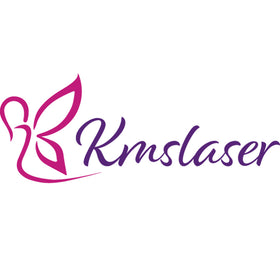How to Use Shockwave Therapy Machine?
Understanding the Basics of Shockwave Therapy
Shockwave therapy is a non-invasive, high-energy acoustic treatment originally developed for orthopedic use. In aesthetic and wellness applications, it has become a popular solution for body shaping, cellulite reduction, and pain management. The machine delivers focused sound waves that penetrate tissues to promote cellular regeneration, improve blood flow, and trigger collagen production. Unlike lasers or RF devices, shockwave does not rely on heat but on mechanical stimulation—making it safe for various skin types and conditions. The key benefits of shockwave therapy include accelerated healing, improved tissue elasticity, and reduced muscle tension. Clinics often choose shockwave for clients seeking non-surgical body contouring or recovery after intense workouts. Its growing popularity in salons and physiotherapy centers is due to the minimal downtime, quick sessions, and visible results over a few weeks.
Step-by-Step Guide to Operating a Shockwave Machine
Using a shockwave therapy machine requires understanding the flow of operation, proper technique, and safety considerations. First, connect the handpiece to the main unit securely and power on the device. Make sure you choose the correct probe for the desired treatment area—flat heads for large areas like thighs, concave tips for ED treatments, etc. Apply ultrasound gel or a suitable lotion to the treatment site to facilitate efficient energy transfer. Select the appropriate treatment protocol from the touchscreen interface, which may include pre-set programs for cellulite, shoulder pain, muscle stiffness, or plantar fasciitis. You may also manually set frequency (in Hz), energy level (in bar), and pulse count. Hold the handpiece firmly, applying slight pressure while moving it in continuous circular or linear strokes. Avoid keeping the probe static on one spot for too long. A typical session lasts 10–15 minutes per area. After the session, clean the probe and assess client feedback. Remember, consistency and proper technique are essential for optimal outcomes.
Key Parameters: Frequency, Energy & Number of Shocks
Each shockwave session must be calibrated based on the client’s condition, treatment goal, and body area. Frequency (measured in Hz) controls the number of pulses per second. Lower frequencies (8–10 Hz) penetrate deeper and are often used for muscle recovery, while higher frequencies (12–16 Hz) are preferred for surface-level issues like cellulite. Energy level (measured in Bar) adjusts the intensity of the waves. Beginners usually start with 1.0–2.0 Bar and increase based on tolerance and treatment area. For firm tissues like thighs or calves, higher pressure (3.0–4.0 Bar) may be used. Pulse count determines how long a treatment will last—typically 1,500 to 3,000 shocks per session, depending on the target area and protocol. Incorrect parameter settings may lead to client discomfort or ineffective results. Operators should be trained in balancing intensity with client feedback, and many machines come with presets for safe starting points.
| Parameter | Typical Setting | Purpose |
|---|---|---|
| Frequency (Hz) | 8–16 Hz | Controls speed of acoustic pulses |
| Energy (Bar) | 1.0–4.0 Bar | Adjusts intensity based on skin and fat thickness |
| Number of Shocks | 1,500–3,000 per area | Defines treatment duration per session |
Maintenance and Safety Tips
Proper maintenance extends the lifespan of your machine and ensures consistent treatment results. After each session, clean the handpiece and all contact surfaces with alcohol or disinfectant wipes. If your machine uses a projectile-based mechanism, monitor the total shock count and replace the internal projectile every 100,000–200,000 shocks, or as instructed. Perform monthly diagnostics to ensure consistent energy output and check if software updates are required. Avoid moisture entering the main control unit and ensure all probes are stored properly to prevent damage. In terms of safety, always perform a patch test on new clients, especially those with sensitive skin or medical conditions. Do not use the device over areas with metal implants, severe varicose veins, or during pregnancy. Operator training is critical—misuse can result in bruising or ineffective results.
| Maintenance Task | Recommended Frequency |
|---|---|
| Disinfect handpiece and probes | After each session |
| Replace projectile/internal part | Every 100,000–200,000 shocks |
| Full system check | Monthly |
Frequently Asked Questions (FAQ)
Q: What is shockwave therapy used for in beauty salons?
A: It’s mainly used for body sculpting, cellulite reduction, muscle relaxation, and post-workout recovery.
Q: Is shockwave therapy painful for clients?
A: Most clients feel a rhythmic tapping. Settings can be lowered for comfort, and gel application helps reduce discomfort.
Q: How often should clients get treatments?
A: A typical protocol is 1–2 sessions per week for 3–5 weeks, depending on treatment area and goals.
Q: Do I need to apply gel during treatment?
A: Yes, gel or lotion ensures proper energy transfer and protects the skin from irritation.
Q: Where can I buy a quality shockwave machine for my salon?
A: You can explore our trusted shockwave therapy machine designed for salon and wellness use.
Conclusion: Deliver Better Results with the Right Technique
Correct usage of a shockwave therapy machine empowers beauty salons to offer high-impact, non-invasive services that meet growing client demand for body care and wellness. By mastering treatment protocols, maintaining the device regularly, and adjusting parameters wisely, you can improve client satisfaction and build long-term value into your service menu.
📞 Need help choosing the right machine or training resources?
Contact us at sophia@kmslaser.com or message us on WhatsApp: +86 18676839070






